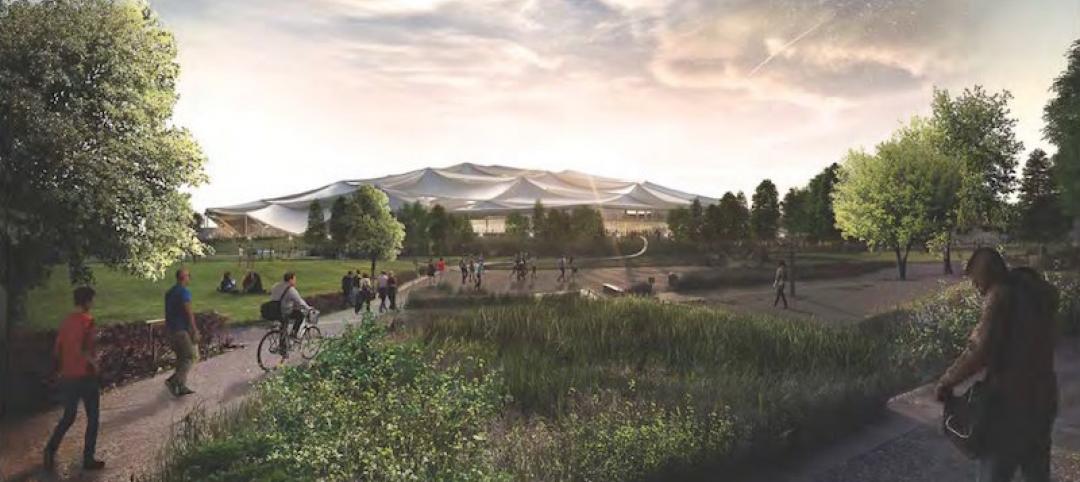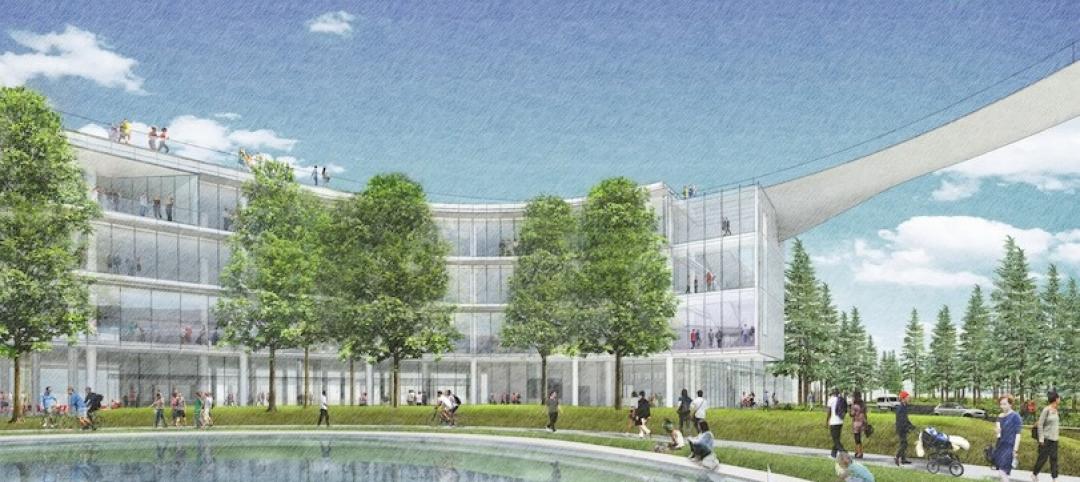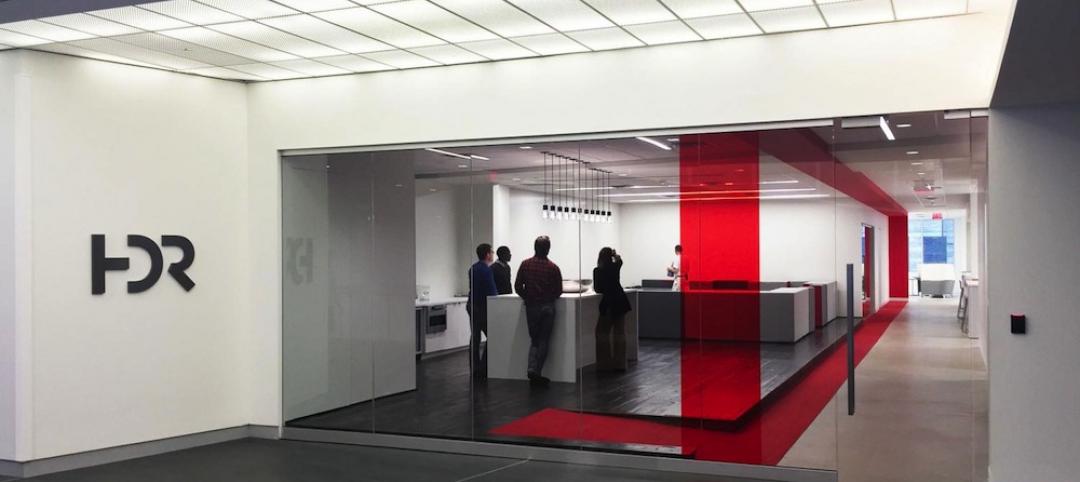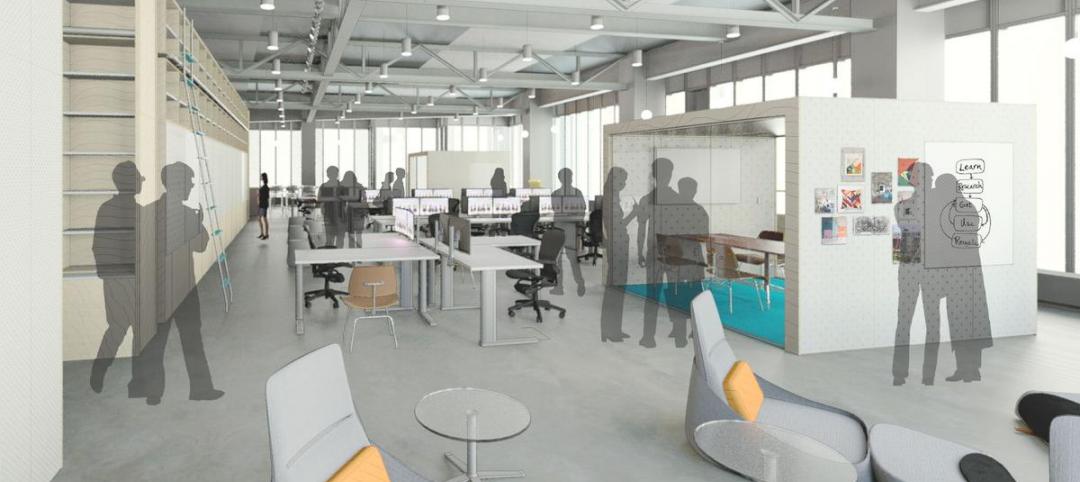In Oak Brook, Ill., about 15 miles west of downtown Chicago, McDonald’s former corporate headquarters has been transformed into a modern office building for its new tenant, Ace Hardware. Now for the first time, Ace Hardware can bring 1,700 employees from three facilities under one roof. (See more office building news from BD+C.)
Originally designed by architect Dirk Lohan, grandson of Mies van der Rohe, McDonald’s old corporate HQ had quirky design elements such as golden arches on door handles and a circular, tiered boardroom that resembled a Quarter Pounder, with “sesame seeds” on the ceiling. In addition to the 300,000-sf office building and 130,000-sf training facility (which housed Hamburger University), the campus comprises a 218-room Hyatt and a smaller leased office building.
Modernizing McDonald’s headquarters while preserving its mid-century modern architecture
Architecture firm Studio Steinbomer has modernized the administrative building while preserving its midcentury architecture and design. Throughout the building, the design team emphasized the midcentury aesthetic—introducing terrazzo flooring, wood slats, metal panels and brick, as well as replacing windows using the original’s same glass profile.
The team reconfigured and renovated the building to serve Ace’s needs, made updates to meet code requirements, and fully renovated all the restrooms, elevator lobbies, and main lobby. A new amenity center includes a café, private dining rooms, commercial kitchen, fitness center, multipurpose room, interview rooms, and conference center.
Two changes represented the most significant interventions: first, converting McDonald’s large test kitchens on the top floor into offices that can enjoy views of the campus; and second, turning the parking garage into a food service area with a café that opens to an outdoor plaza. Both of these elements aim to provide employees with stronger connections to the site. Similarly, the conference center has been equipped with modern technology and flexible folding walls inside a sunlit, glass-encased space, creating a visual and physical connection with the surroundings.
Previously, the administrative facility’s ground floor had been mostly devoted to back-of-house functions. By converting the parking garage and expanding ground-floor uses with vestibules and meeting areas, the lobby is now more interactive and functional. As a result, people feel welcome to linger in the space under its massive skylight.
On the Building Team:
Owner/developer: JPD Oak Brook Holdings, LLC
Design architect and architect of record: Studio Steinbomer
Landscape Architect: Lamar Johnson Collaborative
MEP engineer: ESD (now Stantec)
Structural engineer: Wiss, Janney, Elstner Associates, Inc.
General contractor: Executive Construction, Inc.
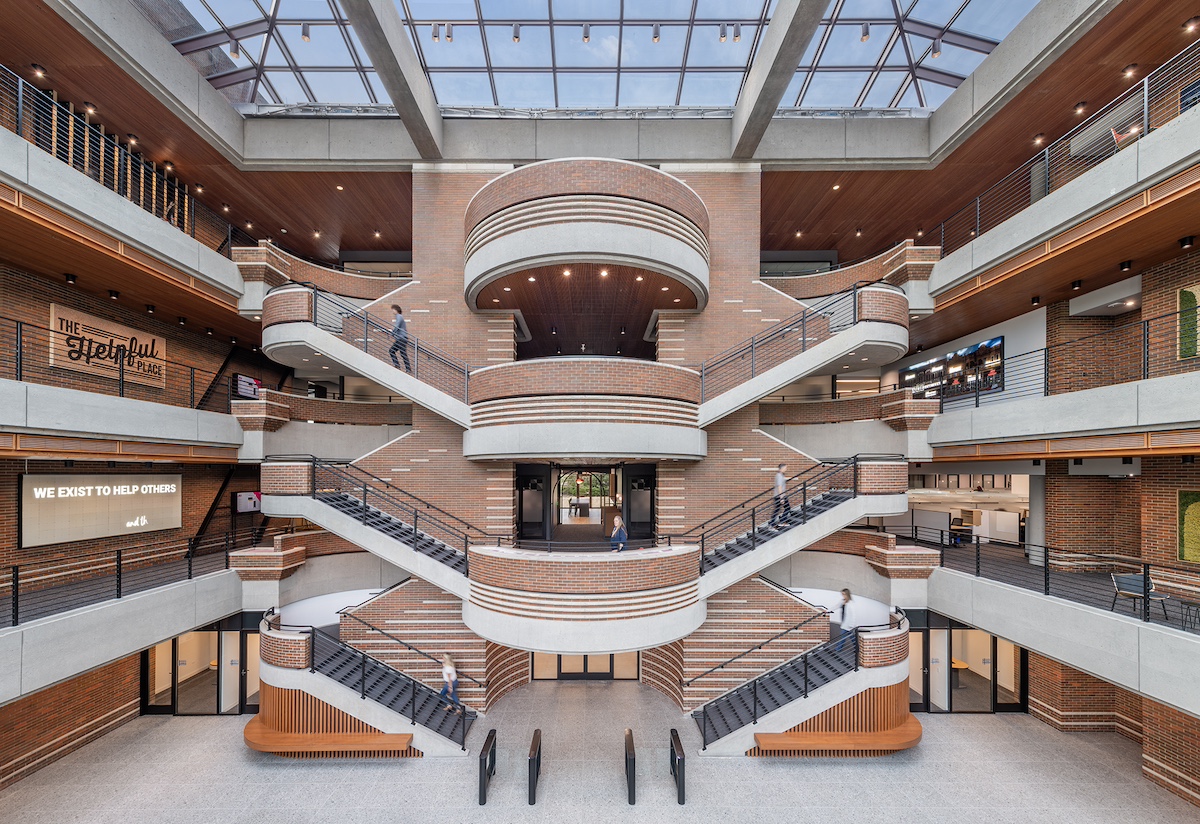
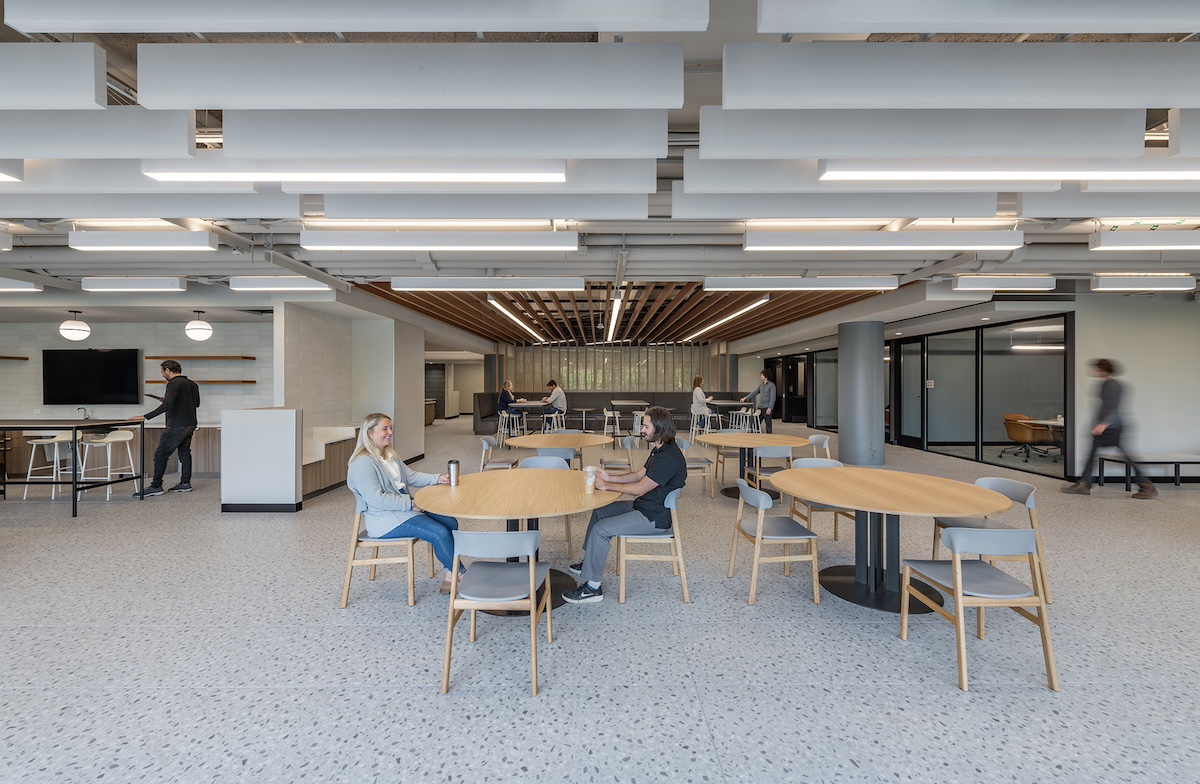
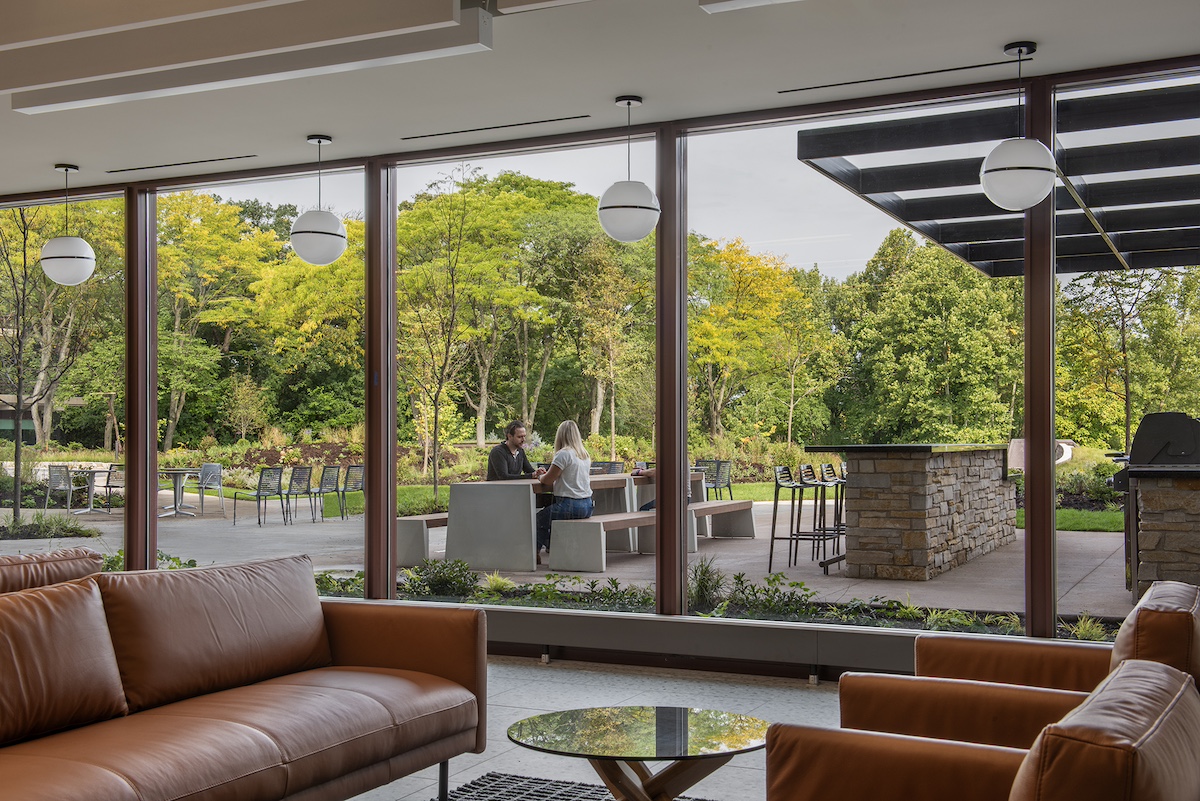
Here is the project summary from architect Studio Steinbomer:
The project to renovate this former McDonalds corporate campus, which was much beloved for its mid-century design and unique features, brought very particular challenges. The 80-acre site, located 15 miles west of downtown Chicago, includes lakes and streams, as well as abundant trees, and even boasts the oldest tree in Illinois. In addition to the 300,000-square-foot office building and 130,000-square-foot training facility - which housed Hamburger University - the campus also comprises a 218-key Hyatt and a smaller leased office building. McDonalds’ departure in 2021 left the specialized buildings and bucolic campus in search of a new use and brought significant concern among both architects and the public that the buildings would be lost to a lack of imagination. Fortunately, the new owner saw opportunity in the existing design and brought in Studio Steinbomer to complete base building improvements of the administrative building for new tenant Ace Hardware
The existing headquarters building carries significant architectural bona fides; it was designed by architect Dirk Lohan, grandson of Mies van der Rohe, and was endowed with exquisite, if somewhat dated and worn, detailing. Its function as McDonald's corporate headquarters also brought with it quirky design elements, including golden arches on door handles and a circular boardroom with three tiers of seating resembling the layers of a quarter pounder, complete with “sesame seeds” on the ceiling. The Steinbomer team took stock of the existing opportunities and gave careful attention to curating what should stay and what could go.
Studio Steinbomer's scope of work included the full renovation of all restrooms, elevator lobbies, and the main lobby, as well as creating a new amenity center that includes a café, private dining rooms, commercial kitchen, fitness center, multi-purpose room, interview rooms, and a conference center. The architects’ efforts included updates to meet code requirements and reconfiguring the program’s spaces and functions, while celebrating the mid-century style and preserving the original architectural design. For Ace Hardware, the project consolidated 1,700 employees from three facilities under one roof for the first time and represented an opportunity to bolster its culture, provide a beautiful workplace, and leave room for expansion. The dramatic adaptive re-use amounted to a taking leap of faith that the interiors could not only be brought into a more modern aesthetic, but also accommodate current technology needs and employee expectations.
The most significant interventions involved converting the large test kitchens on the top floor into offices that take advantage of campus views, and adapting the parking garage into a food service area with a café that opens to an outdoor plaza, both design gestures that provide employees with stronger connections to the site. Likewise, the conference center was fitted with modern technology packages and flexible folding walls inside a sunlit, glass-encased space that interacts visually and physically with its surroundings.
The large administrative facility’s ground floor had been predominantly devoted to back-of-house functions. The lobby, although establishing a grand entrance, previously had little else to offer the building's ground floor experience or uses; there was nowhere to go but up. By converting the parking garage and expanding ground-floor uses with vestibules and meeting areas around the perimeter, the dramatic lobby is now more interactive and functional, inviting people to linger in the charming space under the massive skylight. Throughout the building, but here especially, the Steinbomer team leaned into the mid-century aesthetic, introducing terrazzo flooring, wood slats, metal panels and brick, as well as replacing windows using the same glass profile of the original and continuing the detailing and simplicity of the original design. Dated glass blocks were replaced by glass or slatted wall panels throughout the building to retain the sense of transparency in walls and partitions.
Converting the ground-floor parking garage into the desired café amenity brought different challenges. Because the live load requirement for vehicles is lower than that for people, parts of the garage space required a reinforced structural slab to be placed on top of the existing slab and columns to also be reinforced, creating further spatial limitations. In addition, accommodating modern technology, electrical, and HVAC infrastructure added a layer of complexity in the building’s various low-slung interiors with long, open spans. In response, the architects varied ceiling heights where possible to open interior spaces and introduced acoustical ceiling baffles to mitigate any closed-in effect. To create a sense of void above the low ceiling in the café, for example, wooden slats were layered overhead to create the perception of an unseen void. The effect creates the feeling of sitting under a pergola shelter that opens onto the verdant campus via the floor-to-ceiling glass that opens to the adjacent patio.
The artful adaptive re-use of the campus, once thought to be un-adaptable due to its specific program and quirky features, manages to deftly retain the existing bones of the architecture, the character and quality of the design, and the spirit of the place to keep the building alive and functioning well into the future.
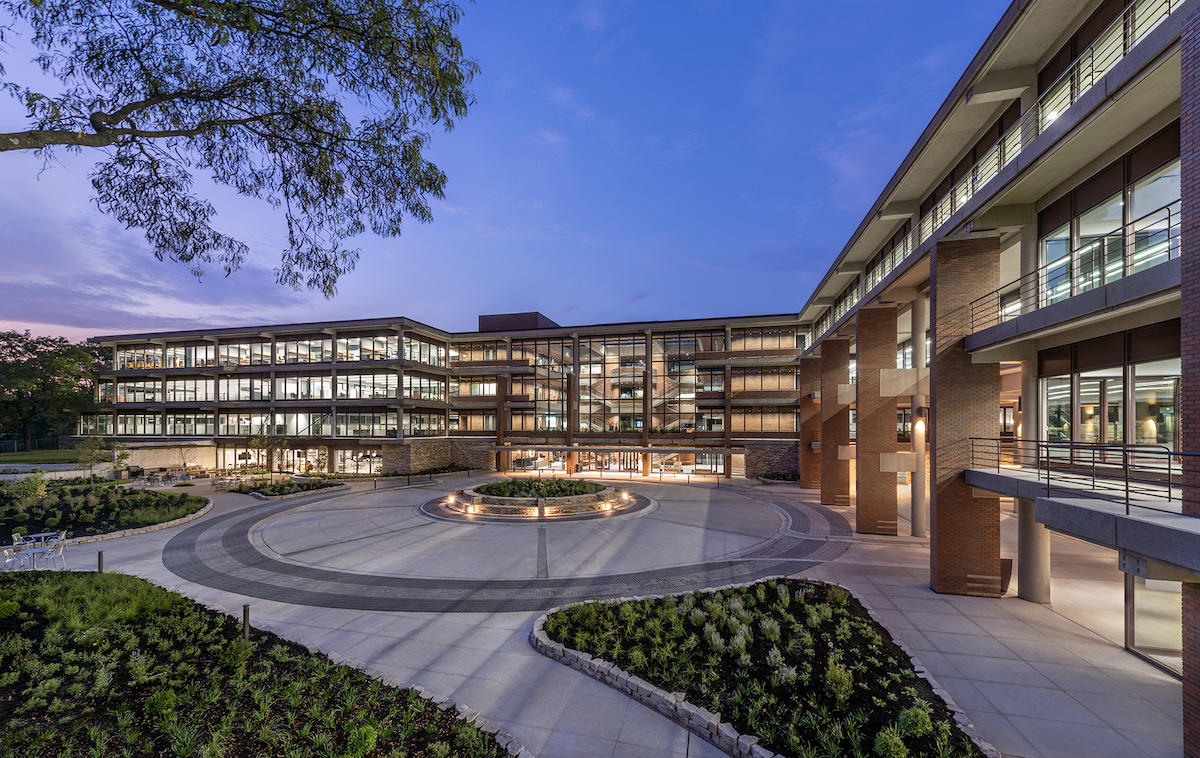

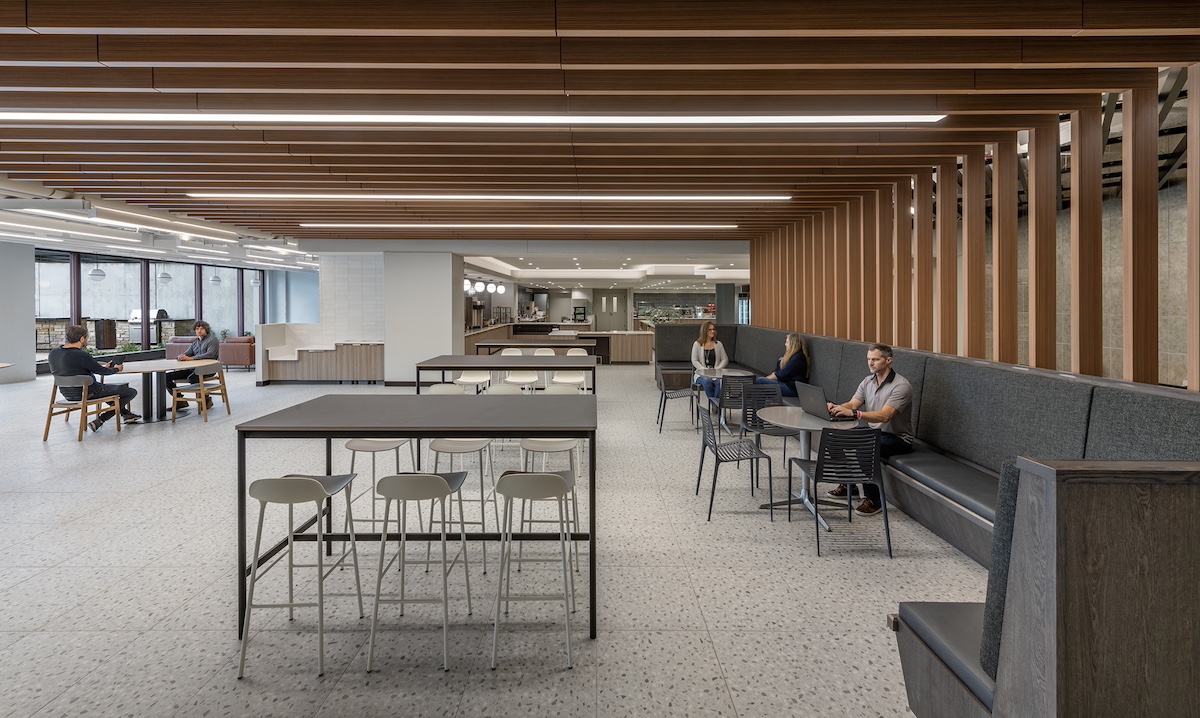

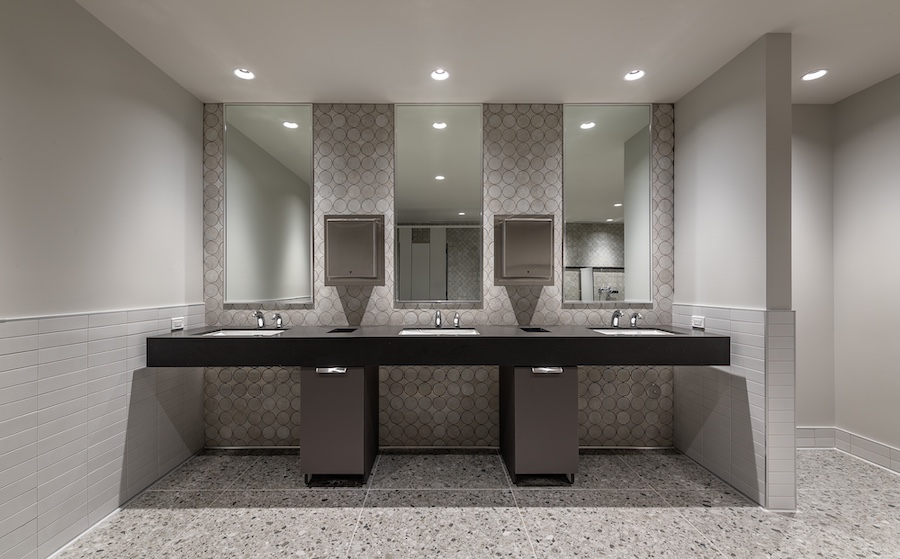
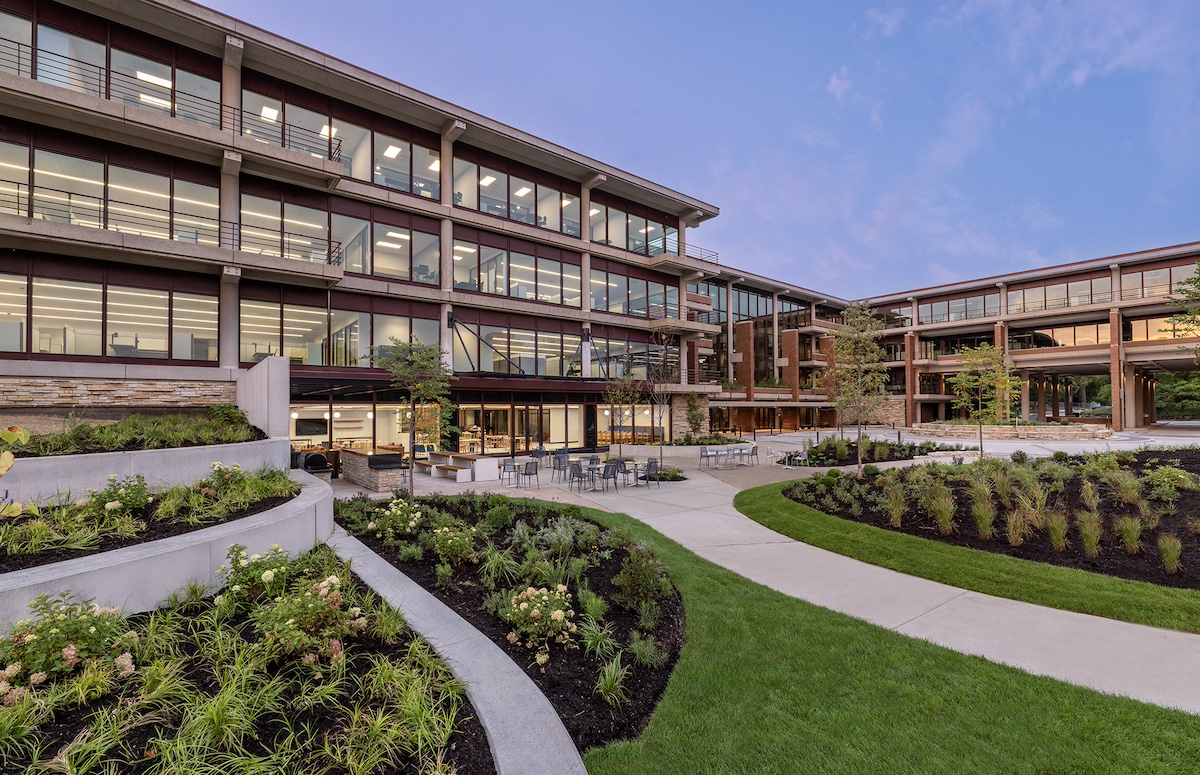
Related Stories
Architects | Mar 20, 2016
Ars Gratia Artis: A North Carolina architect emphasizes the value of art in its designs
Turan Duda says clients are receptive, but the art must still be integral to the building’s overall vision.
Office Buildings | Mar 16, 2016
Google releases new plans and renderings of its Mountain View campus
The original canopy design scheme is still in place, but the plans now call for it to be opaque.
Office Buildings | Mar 10, 2016
Expedia unveils design for Seattle waterfront campus
Transparency and outdoor areas will give the complex a Pacific Northwest vibe.
Office Buildings | Mar 9, 2016
CBRE: Workplace wellness on the rise
As insurance premiums and deductibles continue to rise, both employees and employers are evaluating options to improve their wellbeing, writes CBRE Healthcare Managing Director Craig Beam.
Market Data | Mar 6, 2016
Real estate execs measure success by how well they manage ‘talent,’ costs, and growth
A new CBRE survey finds more companies leaning toward “smarter” workspaces.
Office Buildings | Mar 2, 2016
HDR redesigns Twin Cities' studio to have coffee shop vibe
With open spaces, huddle rooms, and a design lab, the firm's new digs are drastically different than the old studio, which felt like working in a law office. Design Principal Mike Rodriguez highlights HDR's renovation plan.
Office Buildings | Mar 1, 2016
SmithGroupJJR and The Christman Company create a financial headquarters without the drab
The “un-bank” design ditched the stuffy design elements typical of financial institutions and, instead, created something much more inviting.
Office Buildings | Feb 29, 2016
Mobileapolis: An open experiment in workplace mobility
Check out this fun infographic that explains Perkins+Will's ambitions, findings, and next steps for the future home of the firm's Minneapolis office.
Office Buildings | Feb 26, 2016
Benching, desking, and (mostly) paper-free: Report identifies top trends in workplace design for 2016
The report, from Ted Moudis Associates, encompasses over 2.5 million sf of workspace built over the past two years.
Game Changers | Feb 5, 2016
Asia’s modular miracle
A prefab construction company in China built a 57-story tower in 19 days. Here’s how they did it.



